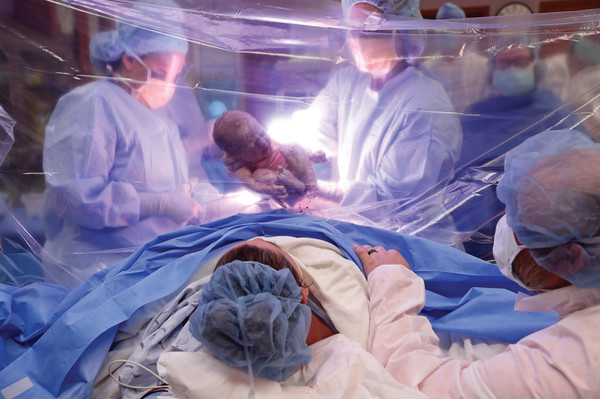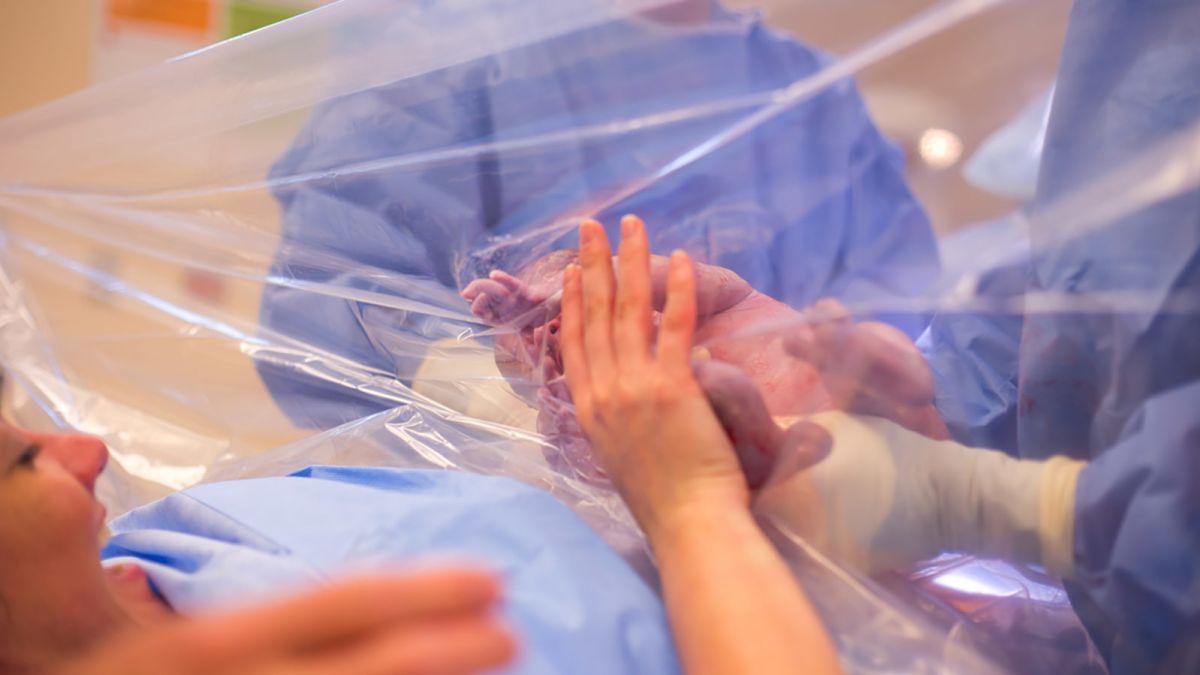Gentle caesarean births: safer, healthier, calmer
There is so much to consider when planning a vaginal birth! Whether you’d accept vaginal examinations, labour and birth positions, pain relief… So many options to think about and plan for. But when it comes to caesarean birth we just have to lie there and have it all done for us – don’t we?
No!
There are lots of options available to you during a caesarean. Even if you’re planning a vaginal birth it’s really worth also doing a caesarean birth plan as a back-up. A caesarean birth plan helps you to think about, and then communicate what’s right for you.

What is a gentle caesarean?
A gentle caesarean is no one single thing, but rather a group of options from which you can decide what you like, and leave the rest. A gentle caesarean helps you to remain in control of, and be at the centre of your birth. It honours the fact that you are bringing a baby, or babies, into the world. You’re not just having an operation.
A gentle caesarean ensures that while the birth itself isn’t physiological, as much of it as possible still is. So, for instance, your baby’s need to have their own cord blood can be respected with delayed cord clamping.

What can happen in a gentle caesarean?
Your birth space
It’s very easy for hospital staff to consider the theatre to be their space, not the place where you are giving birth, but with a bit of though this could all change.
There is often a music system in the operating theatre, so feel free to ask for your own music or preferred radio station to be played – or for it to be switched off for peace and quiet. You can ask in advance what would be needed to play your own music so you can come prepared.
Would you prefer staff to be chatty – to you or each other? Some people like the staff to talk about things which are unrelated to the birth, helping to create an atmosphere that just feels like a friendly room. For others, silence really matters, and a reverence for what’s happening in the room. It’s all up to you – just make sure to write it in your birth plan.
Witnessing your birth
Don’t worry – you can’t see your incision because your baby bump will still be in the way, even after they’re born. But, if your theatre bed is lifted slightly at the head end, and the drapes lowered at the point of birth, you will be able to be one of the first people to see your baby!
Baby births themselves
It’s miraculous to see, but babies can birth themselves in a caesarean, with a combination of uterine contractions and their own movements. Babies push against the top of the uterus with their feet, and turn and twist their way through the incision. Of course, this can only happen when the caesarean isn’t due to the baby needing to be born very quickly, but if there’s time available, this can a lovely option.
Benefits to the baby include a more gentle transition to life outside the womb, rather than being pulled out by the doctor. It may also help them to release fluids from their lungs which normally happens when they’re squeezed through the birth canal, although we don’t have any evidence of this yet. Either way, it’s a kinder entrance to the world for your little one!
Delayed – or even optimal cord clamping
When a baby is born, up to 1/3 of their own blood volume is still in the cord and the placenta. This blood takes a few minutes to pass back into the baby. Unfortunately, it has been normal practice to cut the cord immediately, which stops this blood from transferring to the baby and can lead them to be more likely to be anaemic in the first year of life.
It is perfectly possible to delay the clamping of the cord. Many surgeons will do this as standard, waiting for one to two minutes before cutting. A few are now comfortable with waiting for up to 10 minutes until the cord stops pulsating. During this time you can hold your baby skin to skin, which is covered in the next section.
If there is a problem, such as if you are bleeding heavily, it may be important to cut the cord so that it’s not in the way of the surgeon as they work on resolving it, but in most cases this is possible. So, feel free to ask about it. It is your right to decide whether or not to wait for the cord to be cut.
Immediate skin to skin
If you are feeling well enough you can ask to hold your baby skin to skin straight after birth – even while the cord is still attached, if it’s long enough. Surgeons who support this pass the baby under the drapes which cover your abdomen, so you can take the baby and bring them to your breast. Your baby can be covered with a blanket or towel to keep them warm. You can then get to know your baby while the rest of the surgery is finished. This helps your body too! Holding your baby skin to skin boosts a hormone in your body called oxytocin which contracts your uterus and reduces the chance of bleeding. Skin to skin contact after birth – any birth – is also proven to help to get breastfeeding off to a good start.
To plan for this you’ll need to wear the hospital gown with the opening at the front, and have the sticky monitoring pads which are usually put onto your chest stuck onto your shoulders or back, before you go in for your birth. This way your chest will be free for your baby to snuggle up with you.
In Summary
A caesarean birth is still your birth, and the birth of your baby. It is a special time, far more than just a surgery.
Gentle caesarean options are all options – you can pick any, or none, or all of them – or add in your own ideas. Some can make the experience calmer, and some have important health benefits, so why not talk to your midwife about your birth plan and see what feels right for you.

Leave A Comment